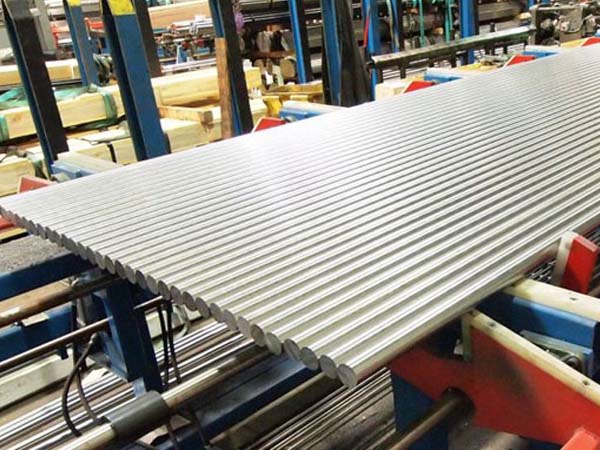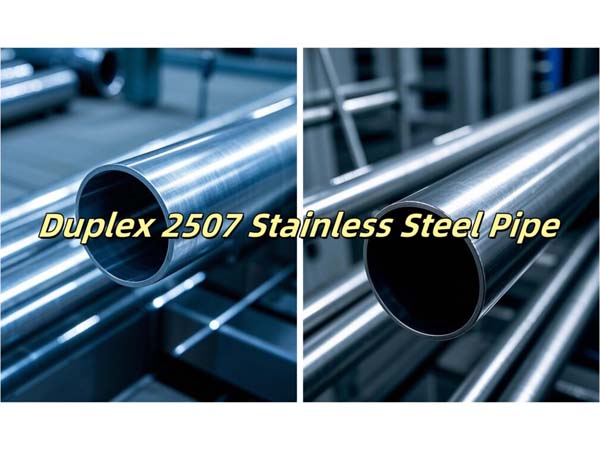





Phone
+86-731-82250427
Address
25th floor, C3 Building, Wanda Plaza, Kaifu District, Changsha, Hunan Province, China.
 Mar 28 2024
Mar 28 2024Super duplex 2507 (UNS S32750, W.Nr. 1.4410) offers a unique combination of high strength and outstanding corrosion resistance. It demonstrates remarkable resistance to general corrosion and localized corrosion, including pitting and crevice corrosion, particularly in demanding environments with high chloride levels and elevated temperatures. Additionally, its duplex structure provides excellent protection against stress corrosion cracking. However, it is important to note that, like other duplex (ferritic/austenitic) grades, Super duplex 2507 is not suitable for extreme temperature conditions. It is not recommended for use below -50°C or above +300°C due to concerns about potential loss of toughness.
Oil and Gas Industry: Pipelines, subsea equipment, risers, heat exchangers, and other components that are exposed to corrosive environments
Chemical Processing: Pressure vessels, reactors, tanks, and piping systems
Desalination Plants: Heat exchangers, pumps, and piping systems
Marine and Offshore Structures: Shipbuilding, offshore platforms, and structures
Pulp and Paper Industry: Digesters, bleach towers, and pulp-handling systems
Power Generation: Heat exchangers, boilers, condensers, and flue gas cleaning systems
Construction and Architecture: Building facades, bridges, infrastructure projects, and other structural elements
|
Material |
C |
Si |
Mn |
P |
S |
Cr |
Ni |
N |
|
2507 |
0.30max |
0.80max |
1.20max |
0.035max |
0.02max |
24.0-26.0 |
6.00-8.00 |
0.24-0.32 |
|
Material |
Tensile strength |
Yield strength 0,2 |
Elongation |
Hardness HB30 |
|
2507 |
750N/mm² |
550N/mm² |
25% |
270HB |
2507 exhibits exceptional resistance to localized corrosion induced by chloride. Its high Pitting Resistance Equivalent Number (PREN), calculated using the equation (Cr%) + (Mo%) + (N%), serves as an indicator of its excellent resistance to chloride pitting and crevice corrosion. Moreover, super duplex 2507 demonstrates outstanding resistance to uniform corrosion in various organic acids, including formic and acetic acids, as well as inorganic acids containing chlorides. When compared to austenitic stainless steels like types 304 and 316, 2507 stainless steel offers improved resistance in high-chloride, high-temperature environments and provides good intergranular corrosion resistance.
For optimal results, it is recommended to subject Duplex 2507 to solution annealing and quenching after hot or cold forming processes. Solution annealing should be conducted at a minimum temperature of 1925ºF (1050ºC). Following annealing, rapid air cooling or water quenching should be performed promptly. To achieve the highest level of corrosion resistance, heat-treated products should undergo pickling and rinsing procedures.
The application of heat to 2507 stainless steel serves various purposes, including heat treatment, welding, and shaping processes. Heat treatment involves subjecting the material to specific temperatures and durations to achieve desired mechanical properties and enhance corrosion resistance. During welding, preheating the base material and maintaining interpass temperatures are important for ensuring proper fusion and preventing cracking. Heating is also utilized in hot forming processes to improve the material's malleability, as well as in brazing or soldering to join components using filler metals. Adhering to recommended temperature ranges and procedures is crucial for safely and effectively heating duplex 2507, taking into account specific application requirements and guidelines provided by material manufacturers or industry standards.
Pickling is a commonly employed procedure for eliminating surface impurities and oxide layers from duplex 2507 stainless steel. It involves immersing the material in a pickling solution, typically an acid-based solution, to dissolve contaminants and restore the material's corrosion resistance.
Hot Forming: To minimize the risk of thermal stress and distortion, it is recommended to heat 2507 uniformly within a temperature range of 1875°F to 2250°F. This temperature range facilitates hot rolling, hot forging, hot bending, and other hot forming techniques to achieve the desired shape. Following the forming process, a solution annealing step should be performed at a minimum temperature of 1925ºF, followed by rapid air cooling or water quenching. This heat treatment optimizes the material's structure and properties.
Cold Forming: Cold forming of duplex 2507 offers advantages such as improved dimensional accuracy and surface finish when compared to hot forming. Most common stainless steel forming methods can be used for cold working duplex 2507, resulting in increased strength and hardness. However, it is important to note that this material has a higher yield strength and lower ductility than austenitic steels. Fabricators may need to apply higher forming forces, increase the bending radius, and allow for more springback. Processes such as deep drawing and stretch forming are more challenging with 2507 stainless steel compared to austenitic stainless steel.
Machining super duplex 2507 is feasible, albeit with certain challenges arising from its high strength and tendency to work-harden. To achieve satisfactory machining results, careful consideration should be given to factors such as tool selection, optimized cutting parameters, coolant/lubrication usage, and chip control. By employing appropriate tools, techniques, and cutting parameters, it is possible to achieve desirable outcomes. However, it is advisable to consult material and tooling guidelines to ensure optimal performance during the machining process.
Duplex 2507 stainless steel exhibits good weldability and can be welded using various standard welding processes such as shielded metal arc welding, gas tungsten arc welding, plasma arc welding, flux cored wire, submerged arc welding, and others. Preheating before welding is typically not required, and post-weld heat treatment is generally unnecessary. When a filler metal is needed, it is recommended to consider AWS E/ER 2509. However, oxyacetylene welding is not advised due to the potential for carbon pickup in the weld.
Ø Bar & Rod
Ø Plate & Sheet
Ø Coil & Strip
Ø Pipe & Tube
Ø Fitting: Flange, Tee, Elbow, Reducer etc.
Ø Forging: Ring, Shaft, Circle, Block etc.
Ronsco is a supplier with more than 27 years of experience in the special metal field, we always adheres to the business phiosophy of "customer-centered", tries its best to meet the requirements of customers and pursues win-win cooperation with customers. Are you looking for special metal products one-stop supplier! Contact Us Now! Email: marketing@ronsteel.com
